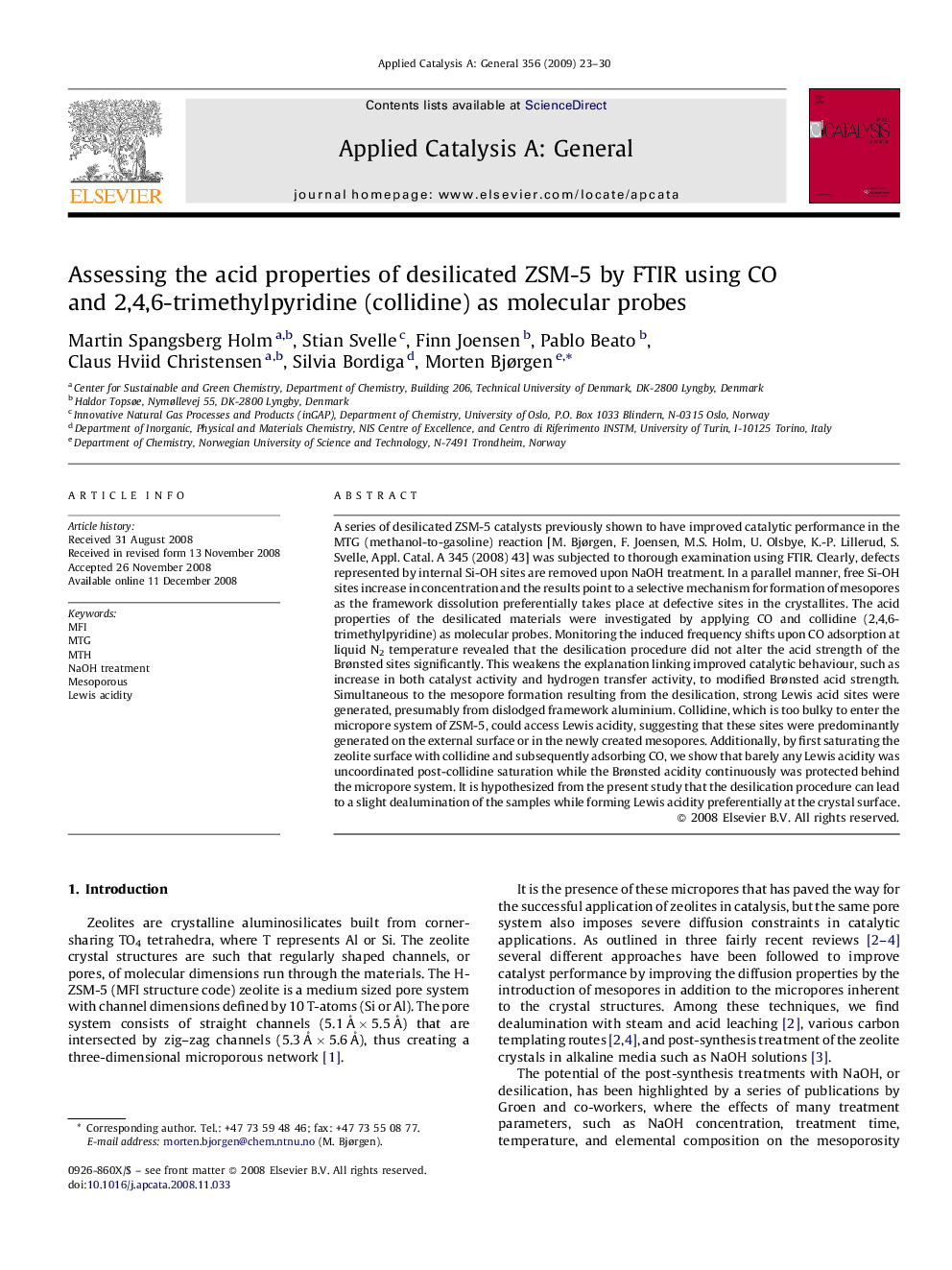| کد مقاله | کد نشریه | سال انتشار | مقاله انگلیسی | نسخه تمام متن |
|---|---|---|---|---|
| 42643 | 45935 | 2009 | 8 صفحه PDF | دانلود رایگان |

A series of desilicated ZSM-5 catalysts previously shown to have improved catalytic performance in the MTG (methanol-to-gasoline) reaction [M. Bjørgen, F. Joensen, M.S. Holm, U. Olsbye, K.-P. Lillerud, S. Svelle, Appl. Catal. A 345 (2008) 43] was subjected to thorough examination using FTIR. Clearly, defects represented by internal Si-OH sites are removed upon NaOH treatment. In a parallel manner, free Si-OH sites increase in concentration and the results point to a selective mechanism for formation of mesopores as the framework dissolution preferentially takes place at defective sites in the crystallites. The acid properties of the desilicated materials were investigated by applying CO and collidine (2,4,6-trimethylpyridine) as molecular probes. Monitoring the induced frequency shifts upon CO adsorption at liquid N2 temperature revealed that the desilication procedure did not alter the acid strength of the Brønsted sites significantly. This weakens the explanation linking improved catalytic behaviour, such as increase in both catalyst activity and hydrogen transfer activity, to modified Brønsted acid strength. Simultaneous to the mesopore formation resulting from the desilication, strong Lewis acid sites were generated, presumably from dislodged framework aluminium. Collidine, which is too bulky to enter the micropore system of ZSM-5, could access Lewis acidity, suggesting that these sites were predominantly generated on the external surface or in the newly created mesopores. Additionally, by first saturating the zeolite surface with collidine and subsequently adsorbing CO, we show that barely any Lewis acidity was uncoordinated post-collidine saturation while the Brønsted acidity continuously was protected behind the micropore system. It is hypothesized from the present study that the desilication procedure can lead to a slight dealumination of the samples while forming Lewis acidity preferentially at the crystal surface.
This FTIR study shows that zeolite defects (internal Si-OH sites) are removed upon NaOH treatment. Free Si-OH sites in the mesopores increase in concentration. Some mesopores are protected by the microporous framework. Mesopore formation appears to take place at defective sites. The acid strength of Brønsted sites is unaffected, but Lewis acidity on the external crystal surface is formed.Figure optionsDownload as PowerPoint slide
Journal: Applied Catalysis A: General - Volume 356, Issue 1, 1 March 2009, Pages 23–30